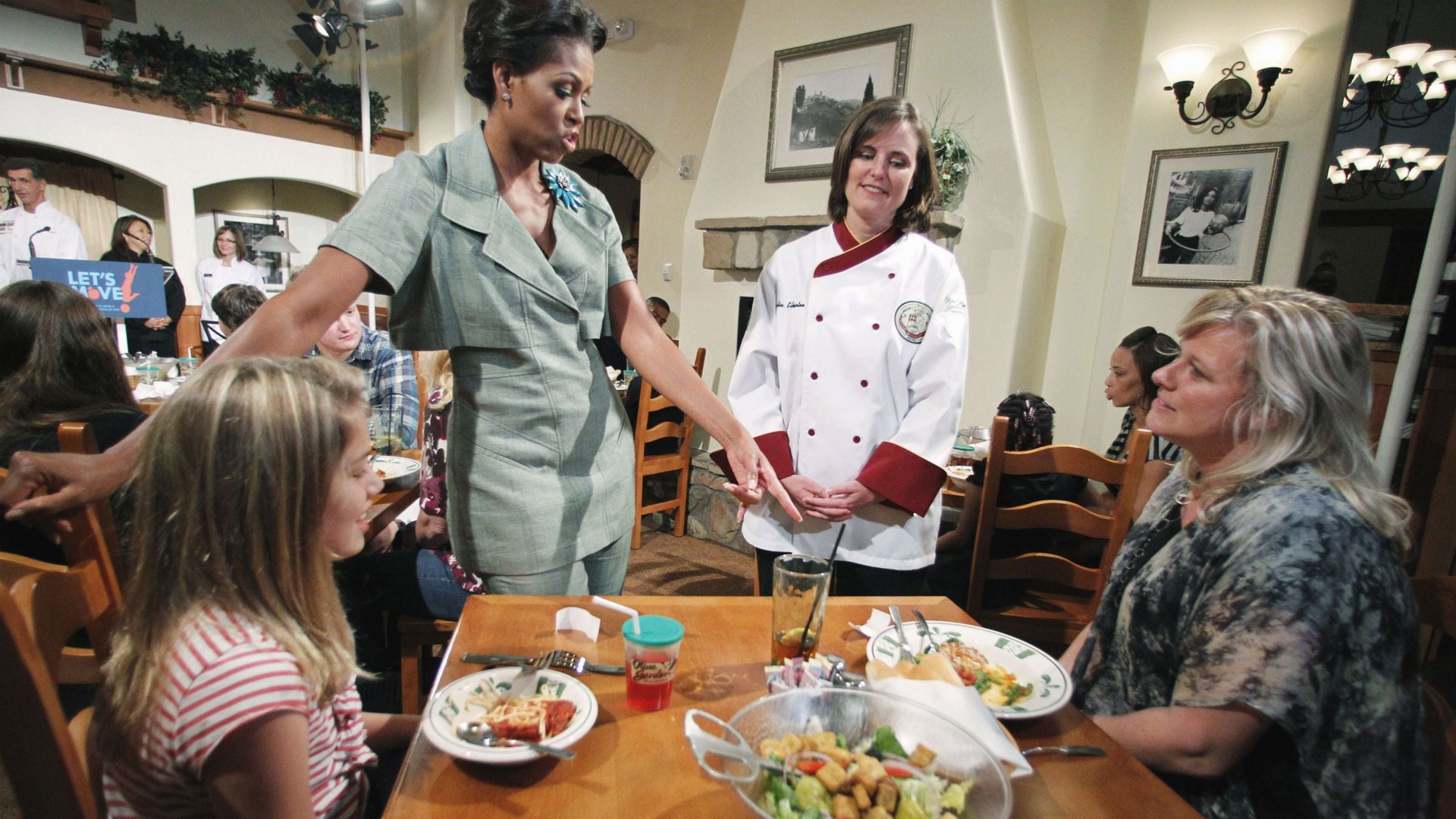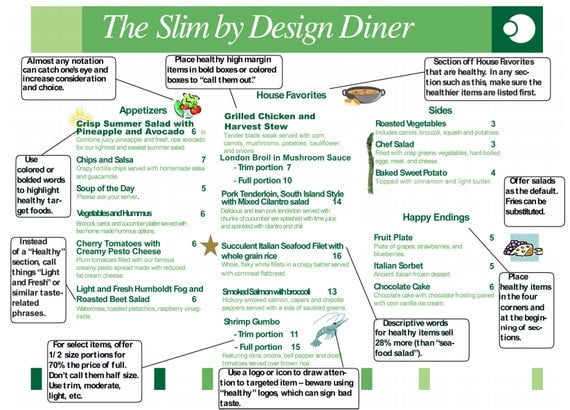This menu design can make your patrons healthier
The diner menu is a peculiar thing: It’s meant to be scrutinized when one is, at best, hungover. But it’s packed with a dizzying array of options that requires a sharp mind to parse. Its offerings are usually basic comforts, yet it has the comprehensiveness and heft of the Book of Deuteronomy. Do you go with the “Boss Hog” sandwich, with its puddle of BBQ sauce, or do you atone for whatever brought you to the diner in the first place by ordering the house salad?


The diner menu is a peculiar thing: It’s meant to be scrutinized when one is, at best, hungover. But it’s packed with a dizzying array of options that requires a sharp mind to parse. Its offerings are usually basic comforts, yet it has the comprehensiveness and heft of the Book of Deuteronomy. Do you go with the “Boss Hog” sandwich, with its puddle of BBQ sauce, or do you atone for whatever brought you to the diner in the first place by ordering the house salad?
It can be hard to pick the healthiest choice from a big menu, but that’s what public health experts want us to do. Americans get more than a third of their calories from food prepared outside the home, and these meals tend to be more caloric, by a lot. The popularity of restaurants has risen in tandem with the obesity epidemic.
But restaurants have their own worries—like staying in business. It’s fine if you order the $3 fruit cup instead of the $12 steak sandwich, but if too many people do that, your neighborhood Bread Zeppelin might close its doors. So if restaurants hawk healthy food, it has to be high-margin healthy food.
Brian Wansink, a Cornell University professor of food marketing, thinks that by hacking their menus, eateries can please themselves, their customers, and their customers’ doctors. Here’s how, according to a study he published recently in the International Journal of Hospitality Management:
- People don’t always notice the healthy stuff—often our eyes jump directly toward the pasta or burgers. He recommends restaurants use graphics, color highlights, and creative fonts to attract attention to the vegetables and whole grains. Fancier places can use descriptors like “Chef’s Recommendation” or “Traditional Favorite,” which have been shown to increase consumption by 28%.
- Whatever you do, don’t label the healthy stuff as “healthy”—in food psychology, that’s a “red light” for the restaurant patron. (“If I wanted to be healthy I would have gone to Nine Inch Kales or Quinoas of the Stone Age!”)
- Place healthy items at the four corners of the menu. People naturally scan menus like they do magazines.
- Put the healthy food at the tops and bottoms of columns—those items sell by 25% more.
- Give healthy, high-margin foods more attractive names by larding on the adjectives. “Succulent Italian Seafood Fillet,” they point out, sells 28% more than “seafood salad.”
- Use whole dollar figures ($14) rather than decimals ($14.00) to make things seem cheaper. Better yet, don’t put the dollar sign at all: It helps if people don’t think about how much they’re paying for that melon slaw.
In summary, this is the menu that Wansink thinks could adequately push the good-for-you lunches:

Sure, it could use a little graphic design help. But according to Wansink, it’s a good way of “1) shifting attention, 2) enhancing taste expectations, and 3) increasing perception of value” to get people to eat better. As he describes, it’s a “win-win strategy.” Hey, there’s even a Happy Ending.